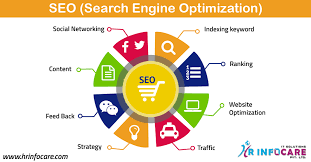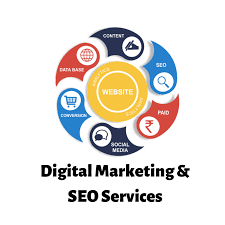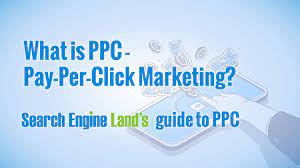Search Engine Optimization (SEO) and Digital Marketing: A Powerful Combination
In today’s digital landscape, having a strong online presence is crucial for businesses of all sizes. It is no longer enough to simply have a website; you need to ensure that your target audience can find you easily. This is where Search Engine Optimization (SEO) comes into play. By incorporating SEO into your digital marketing strategy, you can improve your website’s visibility and drive organic traffic to your business.
So, what exactly is SEO? In simple terms, SEO refers to the process of optimizing your website and its content to rank higher in search engine results pages (SERPs). When users search for keywords related to your business or industry, you want your website to appear at the top of the results. This is because higher rankings lead to increased visibility and more opportunities for potential customers to discover and engage with your brand.
One of the key benefits of SEO is that it helps businesses build credibility and trust with their target audience. When a user sees a website ranking highly in search results, they are more likely to perceive it as trustworthy and reliable. By consistently delivering valuable content that aligns with their search intent, you can establish yourself as an authority in your industry.
Furthermore, SEO goes hand in hand with other digital marketing strategies such as content marketing and social media marketing. By optimizing your website’s content for relevant keywords, you increase the chances of attracting organic traffic from search engines. This traffic can then be directed towards landing pages or blog posts that provide valuable information or promote your products or services.
Additionally, SEO helps improve user experience on your website. Search engines consider factors such as page load speed, mobile-friendliness, and ease of navigation when determining rankings. By focusing on these aspects of user experience, not only will you please search engines but also provide a seamless browsing experience for your visitors.
It’s important to note that SEO is an ongoing process. Search engines continuously update their algorithms to deliver the most relevant and high-quality results to users. Therefore, it is crucial to stay up-to-date with the latest SEO trends and best practices. Regularly monitoring your website’s performance, conducting keyword research, and optimizing your content accordingly will ensure that you maintain a competitive edge in the digital landscape.
In conclusion, incorporating SEO into your digital marketing strategy is essential for achieving online success. By optimizing your website’s content and structure, you can improve visibility in search engine results, build credibility with your audience, and drive organic traffic to your business. Remember that SEO is a continuous process that requires dedication and adaptability. So, embrace the power of SEO and watch your online presence soar to new heights.
11 Commonly Asked Questions About Search Engine Optimization in Digital Marketing
- Is SEO same as digital marketing?
- What are the 4 types of SEO?
- What are the 3 types of SEO optimizations?
- Is SEO included in digital marketing?
- What is SEO SEM in digital marketing?
- How to use search engine optimization in marketing?
- What are the 3 types of SEO?
- Is SEO a type of digital marketing?
- What are the 4 main components of an SEO?
- Is Search Engine Optimization a form of digital marketing?
- Why Search Engine Optimization is important in digital marketing?
Is SEO same as digital marketing?
No, SEO is not the same as digital marketing, but it is an integral part of it. Digital marketing encompasses a broader range of strategies and tactics aimed at promoting products or services through digital channels. It includes various online marketing techniques such as search engine optimization (SEO), content marketing, social media marketing, email marketing, paid advertising (PPC), and more.
SEO specifically focuses on optimizing a website’s visibility and organic search rankings in search engine results pages (SERPs). It involves optimizing website content, structure, and technical elements to improve its relevance and authority in the eyes of search engines. The goal of SEO is to drive organic traffic to a website by appearing higher in search results for relevant keywords.
While SEO is an important component of digital marketing, it works in conjunction with other strategies to achieve overall marketing goals. Digital marketers often utilize SEO alongside content creation, social media campaigns, email campaigns, and paid advertising to create a comprehensive digital marketing strategy that reaches and engages their target audience across various channels.
In summary, SEO is a subset of digital marketing that focuses specifically on improving organic search rankings. It plays a vital role in driving traffic to websites and enhancing their visibility online. However, digital marketing encompasses a broader range of tactics that go beyond just SEO to promote products or services through various online channels.
What are the 4 types of SEO?
The four types of SEO, also known as the pillars of SEO, are:
- On-Page SEO: This type of SEO focuses on optimizing individual web pages to improve their search engine rankings and attract organic traffic. It involves optimizing elements such as meta tags, headings, URL structure, keyword usage, content quality, internal linking, and user experience. On-page SEO ensures that your web pages are relevant and easily accessible to both users and search engines.
- Off-Page SEO: Off-page SEO refers to activities done outside of your website to improve its visibility and authority in search engine rankings. It primarily involves building high-quality backlinks from other reputable websites to increase your website’s credibility. Off-page SEO also includes social media marketing, influencer outreach, guest blogging, and online reputation management. These efforts help establish your website as a trustworthy source of information in the eyes of search engines.
- Technical SEO: Technical SEO focuses on optimizing the technical aspects of your website to improve its crawling and indexing by search engines. It includes tasks such as improving website speed and performance, ensuring proper URL structure, implementing structured data markup for enhanced rich snippets in search results, optimizing XML sitemaps for better crawling, fixing broken links or redirects, and ensuring mobile-friendliness and responsive design. Technical SEO ensures that your website is technically sound and easily understandable by search engines.
- Local SEO: Local SEO is geared towards businesses with a physical location or those targeting a specific geographic area. It aims to optimize your online presence to attract local customers when they search for products or services in their vicinity. Local SEO involves creating a Google My Business profile with accurate information about your business location, managing online reviews from local customers, optimizing local citations (mentions of your business name/address/phone number), targeting location-specific keywords in content creation, and participating in local directories or industry-specific listings.
By incorporating all four types of SEO into your overall SEO strategy, you can ensure a comprehensive and effective approach to improving your website’s visibility, rankings, and organic traffic.
What are the 3 types of SEO optimizations?
The three types of SEO optimizations are:
On-Page SEO: On-page SEO refers to optimizing the elements on your website itself. This includes optimizing the content, meta tags, headings, URL structure, internal linking, and image alt tags. The goal is to make your website more relevant and accessible to search engines and users.
Key on-page SEO techniques include:
– Keyword research and implementation: Identifying relevant keywords and strategically incorporating them into your content.
– Content optimization: Creating high-quality, valuable content that satisfies user search intent.
– Meta tags optimization: Optimizing meta titles and descriptions to accurately describe the page’s content.
– URL structure optimization: Creating descriptive and user-friendly URLs.
– Internal linking: Linking relevant pages within your website to improve navigation and distribute link equity.
Off-Page SEO: Off-page SEO focuses on improving your website’s reputation and authority through external factors. This includes building high-quality backlinks from reputable websites, social media engagement, online reviews, and brand mentions.
Key off-page SEO techniques include:
– Link building: Acquiring backlinks from authoritative websites through outreach, guest blogging, or creating valuable content that naturally attracts links.
– Social media marketing: Engaging with your audience on social media platforms to increase brand visibility and drive traffic.
– Online reputation management: Monitoring and managing online reviews to build trust with potential customers.
Technical SEO: Technical SEO involves optimizing the technical aspects of your website to ensure search engines can crawl, index, and understand its content efficiently. This includes website speed optimization, mobile-friendliness, site structure, XML sitemaps, robots.txt files, canonical tags, schema markup implementation, and SSL security.
Key technical SEO techniques include:
– Website speed optimization: Optimizing page load times for better user experience.
– Mobile-friendliness: Ensuring that your website is responsive and displays correctly on mobile devices.
– Site structure optimization: Organizing your website’s content and navigation in a logical and user-friendly manner.
– XML sitemaps: Creating and submitting XML sitemaps to help search engines crawl and index your website effectively.
– Schema markup implementation: Adding structured data markup to provide search engines with additional information about your content.
By implementing all three types of SEO optimizations, you can improve your website’s visibility, relevance, and user experience, leading to higher rankings in search engine results.
Is SEO included in digital marketing?
Yes, SEO is a crucial component of digital marketing. Digital marketing encompasses various strategies and tactics aimed at promoting businesses, products, or services through digital channels such as search engines, social media platforms, email marketing, content marketing, and more. SEO plays a significant role within the broader scope of digital marketing.
SEO focuses on optimizing websites and their content to improve visibility in search engine results pages (SERPs). By incorporating SEO techniques, businesses can increase their organic (non-paid) search engine traffic. This means that when users search for keywords related to their business or industry, they have a higher chance of appearing at the top of the search results.
Digital marketing strategies often involve creating high-quality content that aligns with target audience interests and needs. SEO helps ensure that this content is optimized with relevant keywords, meta tags, headers, and other on-page optimization techniques. By doing so, businesses enhance their chances of ranking well in organic search results and attracting valuable traffic.
Moreover, SEO intersects with other digital marketing channels. For example:
- Content Marketing: SEO helps identify relevant keywords to target when creating blog posts, articles, videos, or other forms of content. By optimizing the content for these keywords and ensuring it meets user intent, businesses can improve its visibility in search engines and attract organic traffic.
- Social Media Marketing: While social media platforms have their own algorithms for displaying content to users, optimizing social media posts with appropriate keywords and hashtags can still improve discoverability within those platforms’ internal search functions.
- Paid Advertising: While SEO focuses on organic rankings in search results (non-paid), paid advertising campaigns like Pay-Per-Click (PPC) can complement SEO efforts by targeting specific keywords or demographics to drive targeted traffic to a website.
In summary, while digital marketing encompasses various strategies and channels beyond just SEO alone, incorporating effective SEO practices is crucial for driving organic traffic to websites and improving overall online visibility within search engine results.
What is SEO SEM in digital marketing?
SEO and SEM are two essential components of digital marketing that work together to improve a website’s visibility and drive traffic.
SEO, or Search Engine Optimization, focuses on optimizing a website’s content, structure, and technical aspects to improve its organic (unpaid) search engine rankings. The goal of SEO is to increase a website’s visibility in search engine results pages (SERPs) for relevant keywords or phrases. By optimizing various elements such as on-page content, meta tags, headings, and backlinks, SEO aims to attract organic traffic from search engines.
On the other hand, SEM, or Search Engine Marketing, involves paid advertising efforts to promote a website’s visibility in search engine results. It typically refers to pay-per-click (PPC) advertising campaigns where businesses bid on specific keywords or phrases in order to have their ads displayed prominently in search engine results. SEM allows businesses to target specific audiences based on their search intent and display ads that are relevant to their queries.
While both SEO and SEM aim to increase a website’s visibility in search engines, they differ in terms of cost and approach. SEO focuses on organic strategies and long-term results by optimizing the website itself. It requires continuous effort and patience as it takes time for search engines to recognize these optimizations. On the other hand, SEM offers immediate visibility through paid advertising but requires ongoing investment as long as you want your ads to appear.
In an effective digital marketing strategy, SEO and SEM can complement each other. By combining both approaches, businesses can maximize their online presence and reach a broader audience. For example, while waiting for SEO efforts to yield results, businesses can run SEM campaigns to drive immediate traffic and generate leads. Additionally, valuable insights gained through PPC campaigns can inform SEO strategies by identifying high-converting keywords or user behavior patterns.
In summary, SEO focuses on organic optimization techniques aimed at improving a website’s visibility in search engine results over time. SEM involves paid advertising efforts to achieve immediate visibility in search engine results pages. By utilizing both SEO and SEM effectively, businesses can enhance their online presence, increase website traffic, and reach their target audience more effectively.
How to use search engine optimization in marketing?
Search engine optimization (SEO) is a powerful tool that can greatly enhance your marketing efforts. Here are some key steps to effectively use SEO in your marketing strategy:
- Keyword Research: Start by conducting thorough keyword research to identify the terms and phrases that your target audience is using when searching for products, services, or information related to your business. Use keyword research tools to find relevant keywords with high search volume and lower competition.
- On-Page Optimization: Optimize your website’s on-page elements to make it more search engine-friendly. This includes optimizing title tags, meta descriptions, headers, and URLs with relevant keywords. Ensure that your content is well-structured, easy to read, and provides value to users.
- Quality Content Creation: Develop high-quality content that aligns with your target audience’s interests and search intent. Create informative blog posts, articles, videos, or infographics that answer their questions or provide solutions to their problems. Incorporate relevant keywords naturally within the content while maintaining readability.
- Link Building: Build a strong backlink profile by acquiring high-quality links from reputable websites in your industry. This can be done through guest blogging, reaching out to influencers for collaborations or interviews, or creating shareable content that naturally attracts links.
- Mobile Optimization: With the majority of internet users accessing websites through mobile devices, it’s crucial to ensure that your website is mobile-friendly. Optimize page load speed, improve navigation for smaller screens, and ensure responsive design for a seamless user experience.
- Local SEO: If you have a local business or serve specific geographical areas, optimize your website for local search results by including location-specific keywords in your content and meta tags. Claim and optimize your Google My Business listing and encourage customers to leave reviews.
- Technical SEO: Pay attention to technical aspects such as site speed optimization, crawlability by search engines (XML sitemaps), secure HTTPS protocol, and proper URL structure. Fix any broken links or errors that could negatively impact your website’s performance.
- Analytics and Monitoring: Regularly monitor your website’s performance using tools like Google Analytics. Track key metrics such as organic traffic, keyword rankings, bounce rates, and conversion rates to measure the effectiveness of your SEO efforts. Adjust your strategy accordingly based on data insights.
- Social Media Integration: Incorporate SEO strategies into your social media marketing efforts by optimizing profiles, using relevant keywords in captions and descriptions, and sharing content that encourages engagement and link sharing.
- Stay Updated: SEO is an ever-evolving field, with search engine algorithms constantly changing. Stay updated with the latest SEO trends, algorithm updates, and best practices to ensure that your marketing efforts remain effective.
By implementing these steps effectively, you can harness the power of search engine optimization to improve your website’s visibility, attract more organic traffic, and ultimately drive conversions for your business.
What are the 3 types of SEO?
The three main types of SEO are:
- On-Page SEO: On-page SEO focuses on optimizing individual web pages to improve their visibility and rankings in search engine results. This includes optimizing factors such as meta tags, headings, content quality, keyword usage, URL structure, internal linking, and user experience. On-page SEO ensures that your website is easily understood by search engines and provides valuable information to users.
- Off-Page SEO: Off-page SEO refers to activities that are done outside of your website to improve its visibility and authority. The primary focus of off-page SEO is building high-quality backlinks from other reputable websites. Backlinks act as “votes of confidence” from other sites, indicating to search engines that your website is trustworthy and relevant. Other off-page SEO techniques include social media marketing, influencer outreach, guest blogging, and online reputation management.
- Technical SEO: Technical SEO involves optimizing the technical aspects of your website to ensure that search engines can crawl, index, and understand its content efficiently. This includes optimizing site speed, mobile-friendliness, site architecture, XML sitemaps, robots.txt files, canonical tags, structured data markup, and ensuring proper URL redirects. Technical SEO helps search engines interpret your website’s content effectively and improves its overall performance in search results.
It’s important to note that these three types of SEO are interconnected and work together to improve a website’s visibility in search engine rankings. A comprehensive approach that incorporates all three types will yield the best results for your digital marketing efforts.
Is SEO a type of digital marketing?
Yes, SEO (Search Engine Optimization) is indeed a type of digital marketing. Digital marketing encompasses various strategies and techniques used to promote products, services, or brands through digital channels. SEO specifically focuses on optimizing websites and their content to improve visibility in search engine results pages (SERPs). By incorporating SEO into a digital marketing strategy, businesses aim to drive organic traffic and increase their online presence. Other types of digital marketing include social media marketing, content marketing, email marketing, pay-per-click advertising (PPC), and more.
What are the 4 main components of an SEO?
The four main components of SEO (Search Engine Optimization) are:
- On-Page SEO: This component focuses on optimizing the elements within your website to improve its visibility in search engine rankings. It includes factors such as keyword research and optimization, meta tags, headings, URL structure, internal linking, and content quality and relevance. On-page SEO ensures that search engines can easily understand and index your website’s content.
- Off-Page SEO: Off-page SEO refers to activities that take place outside of your website but have an impact on its search engine rankings. The primary focus of off-page SEO is building high-quality backlinks from other reputable websites. Backlinks act as votes of confidence for your website’s authority and relevance. Other off-page SEO strategies include social media marketing, influencer collaborations, guest blogging, and online reputation management.
- Technical SEO: Technical SEO involves optimizing the technical aspects of your website to ensure it is easily accessible by search engines and provides a smooth user experience. This includes factors such as website speed optimization, mobile-friendliness, crawlability, XML sitemaps, structured data markup, canonical tags, and robots.txt files. Technical SEO ensures that search engines can efficiently crawl and index your site while providing a positive user experience.
- User Experience (UX): User experience plays a crucial role in SEO because search engines prioritize websites that provide a positive experience for users. Factors such as page load speed, mobile responsiveness, intuitive navigation, clear site architecture, engaging content layout, and low bounce rates contribute to a good user experience. By focusing on UX elements, you enhance the chances of visitors staying longer on your site and engaging with your content.
These four components work together to optimize your website for higher visibility in search engine rankings. A comprehensive approach that addresses all these aspects will help improve organic traffic to your site and increase its overall performance in the digital landscape.
Is Search Engine Optimization a form of digital marketing?
Yes, Search Engine Optimization (SEO) is considered a form of digital marketing. SEO involves optimizing a website and its content to improve its visibility and rankings in search engine results pages (SERPs). By implementing SEO strategies, businesses aim to attract organic traffic from search engines and increase their online presence.
Digital marketing encompasses various strategies and tactics aimed at promoting products, services, or brands through digital channels. SEO is one of the core components of digital marketing because it focuses on improving a website’s visibility in search engines, which is a crucial aspect of online marketing.
Other forms of digital marketing include content marketing, social media marketing, email marketing, pay-per-click advertising (PPC), affiliate marketing, and more. These strategies work together to create a comprehensive digital marketing plan that helps businesses reach their target audience, drive traffic to their websites, generate leads, and ultimately achieve their business goals.
So while SEO is just one aspect of digital marketing, it plays a vital role in helping businesses optimize their online presence and increase their visibility in search engine results.
Why Search Engine Optimization is important in digital marketing?
Search Engine Optimization (SEO) plays a crucial role in digital marketing for several reasons:
- Increased Visibility: SEO helps improve your website’s visibility in search engine results pages (SERPs). When your website ranks higher for relevant keywords, it becomes more likely to be seen by users searching for products, services, or information related to your business. Increased visibility leads to more organic traffic and potential customers finding your website.
- Targeted Traffic: SEO allows you to attract highly targeted traffic to your website. By optimizing your content for specific keywords and search queries, you can ensure that the users who find your website are genuinely interested in what you have to offer. This increases the likelihood of converting them into customers or leads.
- Cost-Effectiveness: Compared to other digital marketing strategies like paid advertising, SEO can be a cost-effective approach in the long run. While it may require an initial investment of time and resources, once your website starts ranking well organically, you can continue to drive traffic without having to pay for every click or impression.
- Trust and Credibility: Appearing at the top of search results instills trust and credibility in the eyes of users. People tend to trust search engines like Google and view the top-ranking websites as reputable sources of information or reliable businesses. By optimizing your website with high-quality content and adhering to SEO best practices, you can establish yourself as an authority in your industry.
- Long-Term Results: Unlike some short-term digital marketing tactics, SEO can provide long-lasting results. While it takes time and effort to climb up the rankings, once you achieve a solid position, it becomes easier to maintain that position with regular updates and monitoring. This sustainability ensures a consistent flow of organic traffic over time.
- Integration with Other Marketing Strategies: SEO works hand in hand with other digital marketing strategies such as content marketing, social media marketing, and email marketing. By optimizing your content for SEO, you can enhance the effectiveness of these strategies and drive more targeted traffic to your website.
In conclusion, Search Engine Optimization is important in digital marketing because it helps improve visibility, attract targeted traffic, establish trust and credibility, provide long-term results, and integrate with other marketing strategies. By investing in SEO, you can enhance your online presence and achieve sustainable growth for your business.




